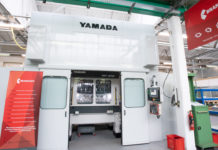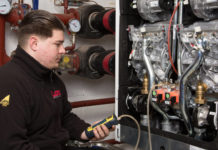
For business owners, the importance of implementing effective safety measures in the workplace cannot be overstated. Particularly when employees are working with machinery, having proper safety protocols in place not only works to protect workers but also helps optimise operational efficiency.
Rates of accidents in the workplace & industries most affected
Accidents in the workplace present a significant challenge across various sectors, with thousands of workers in the UK suffering illness or injury relating to their work. According to the Health & Safety Executive (HSE), for 2022/23 it was estimated that 1.8m workers suffered illnesses believed to be caused (or made worse) by their work and around 561,000 workers sustained non-fatal injuries in their workplace.
Statistically, the construction industry reports higher rates of workplace accidents, due to the nature of the work, with it being the industry with the highest number of fatal injuries to workers in Great Britain in 2022/23. After construction, the agriculture and manufacturing industries were the second and third highest.
The gravity of these statistics highlights not only the human cost in terms of potential fatalities and severe injuries but also the substantial financial impacts due to lost workdays and compensation claims. Emphasising prevention is crucial, as the consequences of neglect can be devastating, extending beyond immediate physical injuries to long-term financial and reputational damage for businesses.
Ways to prevent accidents in the workplace:
Preventing accidents is not just a regulatory requirement but a crucial investment in the wellbeing of the workforce and the operational stability of the business. Key strategies include conducting detailed risk assessments, providing thorough training and supervision, and ensuring all machinery is properly guarded. These measures collectively help build a safer workplace environment, significantly reducing the likelihood of accidents and enhancing overall productivity.
- Risk Assessment
Risk assessment is the cornerstone of effective workplace safety management, particularly where machinery is extensively used. By systematically evaluating each piece of equipment and its environment, employers can identify potential hazards. Appropriate risk assessments spot any signs of wear or unsafe movements, determining who might be harmed and how, and assessing the severity and likelihood of these risks.
Without risk assessments, employees are at risk each time they operate workplace machinery. Continuous vigilance helps prevent accidents and maintain a safe work environment, thus safeguarding employees while enhancing productivity and operational efficiency.
- Training & Supervision
Employers who provide workplace training can benefit from improved staff retention, satisfaction, and performance. Effective training in health and safety is critical in preventing workplace accidents. Training can equip employees with the necessary skills and knowledge to operate machinery safely and efficiently. Training programs should be comprehensive, covering all aspects of machine operation, including start-up, operation, maintenance, and shutdown procedures.
When working with machinery at work, machinery safety is of the highest importance with the Provision & Use of Work Equipment Regulations 1998 (PUWER) guiding workers and companies on proper use of work equipment.
When operating machinery, like bandsaws in the workplace, it’s important for employees to fully understand safe operation procedures and which safety measures the machines are equipped with. Expert bandsaw training can teach workers to be aware of emergency stop switches, safety interlock switches, and more, which are present on machinery to learn how and when they are used.
Alongside appropriate training, supervisors are responsible for monitoring work practices to ensure that workplace safety procedures and training are followed. They should actively engage with employees, providing feedback and making corrections when unsafe practices are observed. Supervision provides an opportunity for ongoing risk assessment and improvement and can help identify when additional training is needed or if safety practices need to be updated.
- Machine Guarding
Effective guarding for workplace machinery helps prevent a range of accidents, particularly those involving contact with moving parts. The primary function of machine guarding is to act as a barrier between the operator and the dangerous parts of the machine, thereby minimising the risk of injury.
Proper guarding involves more than just placing a barrier; it requires careful design and maintenance to ensure that guards are effective and do not impede the operator’s ability to perform work efficiently.
Key considerations include ensuring that guards are securely fixed and cannot be easily removed or bypassed and that they are made of durable material capable of withstanding the conditions of the operating environment. Additionally, all machines should be regularly inspected to verify that the guards are intact and functioning correctly.
Prioritising workplace safety in environments where machinery is used is not just a regulatory obligation, it is a fundamental aspect of responsible business management. Implementing rigorous risk assessments, ensuring thorough training and supervision, and maintaining effective machine guarding are all crucial steps in fostering a safe workplace.
By committing to continuous improvement in safety practices, businesses can ensure compliance with health and safety regulations, protect their workforce, and maintain their reputation as responsible employers.

















